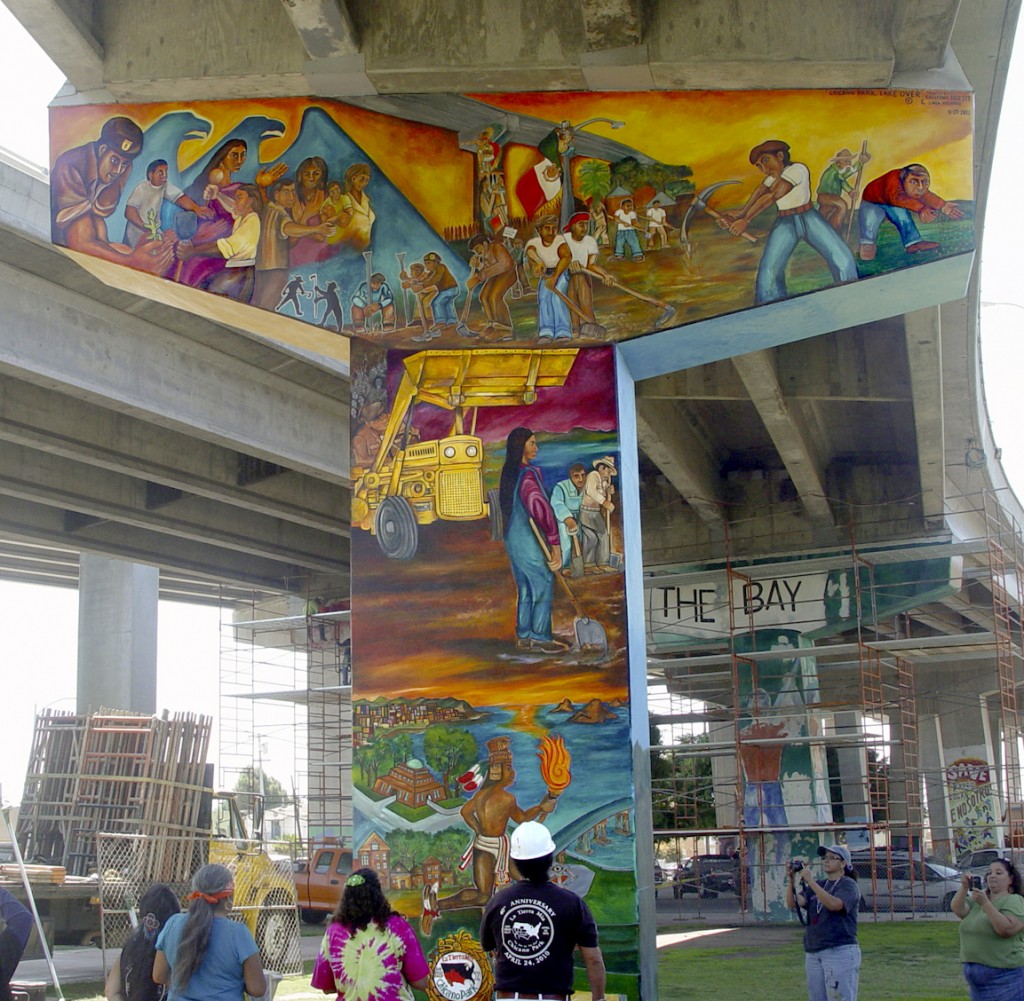“Chicano Park Takeover” A Complete Success
First Phase of the Chicano Park Murals Revitalization to End this Weekend
Story and Photo by David Avalos

Artist: Guillermo Chavez Rosette — Assistant Artist: Linda M. Velarde
Mural Material Specifications: Golden Acrylic Paint and Medium, and Nova Color Acrylic Paint on original mural, 2 coats of Liquitex Gloss Medium Varnish, Permashield Sacrificial Graffiti barrier
Velarde exclaimed that watching the mural come into full view as the scaffolding was slowly removed was “like giving birth.” Rosette declared that it is a Tolteca mural and Na-varro added that it’s a testimony that the Toltecas en Aztlán still live. Camarillo reminded us that the houses depicted in the mural once stood “right here” indicating the ground we stood on.
The mural documents the community’s militant takeover on April 22, 1970 of an area under the Coronado Bay Bridge that the City of San Diego had promised for a neighborhood park. When Mario Solis discovered construction workers grading the land for a Highway Patrol parking lot instead, he alerted Chicano Studies’ students who mobilized others to occupy the park. Solis is shown in the center of the mural driving a commandeered skip loader, while men, women and children work the land planting seeds and saplings. Faced with an entire community’s rebellion city officials agreed after a twelve-day occupation to acquire the state land for the development of a community park.
Velarde stated that “public spaces need to be held for the good of the people in the community.” She referred to the mural as part of a living tradition possessing “a spirit of awakened consciousness that is needed now during troubled times to give us hope as we pursue justice, peace and compassion.” Rosette pointed to the image of the indigenous runner and recalled that the period of the first Chicano murals also saw the birth of Chicana/o danza Azteca in San Diego. He links the mural’s many representations of Cuauhtémoc, a symbol of Aztec resistance to Spanish oppression, to the Chicana/o community’s ongoing struggle for self-respect, self-determination and self-sacrifice.


 Arturo Castañares
Arturo Castañares


